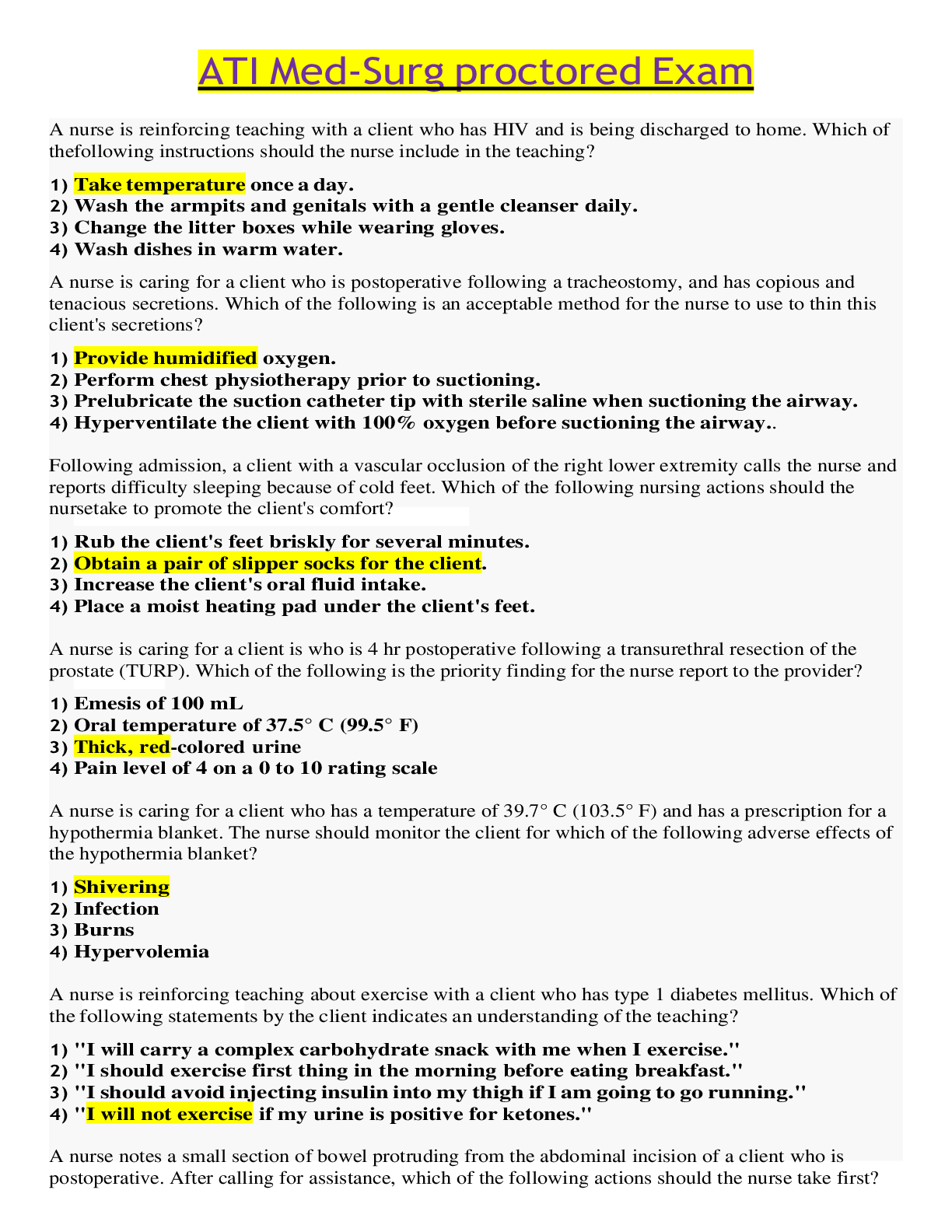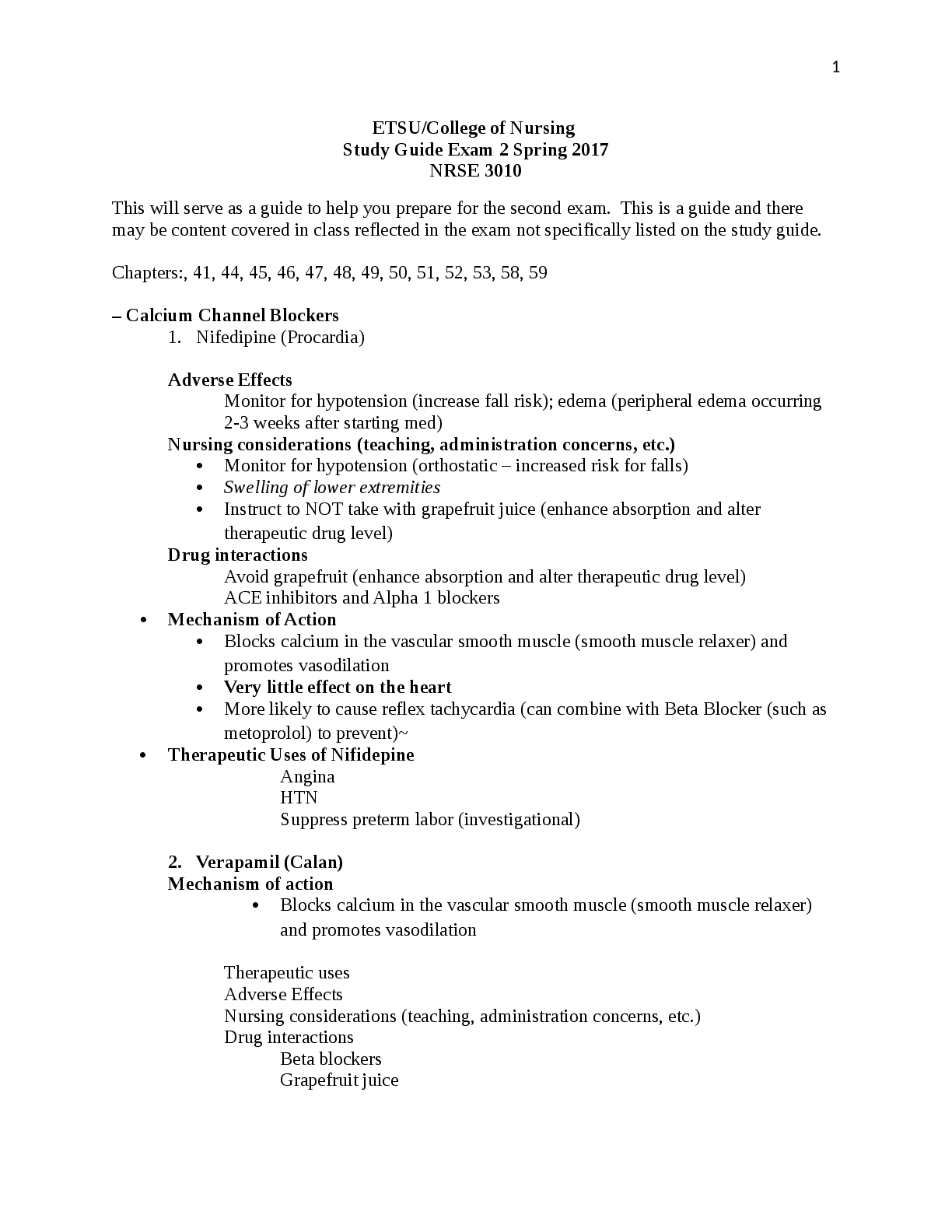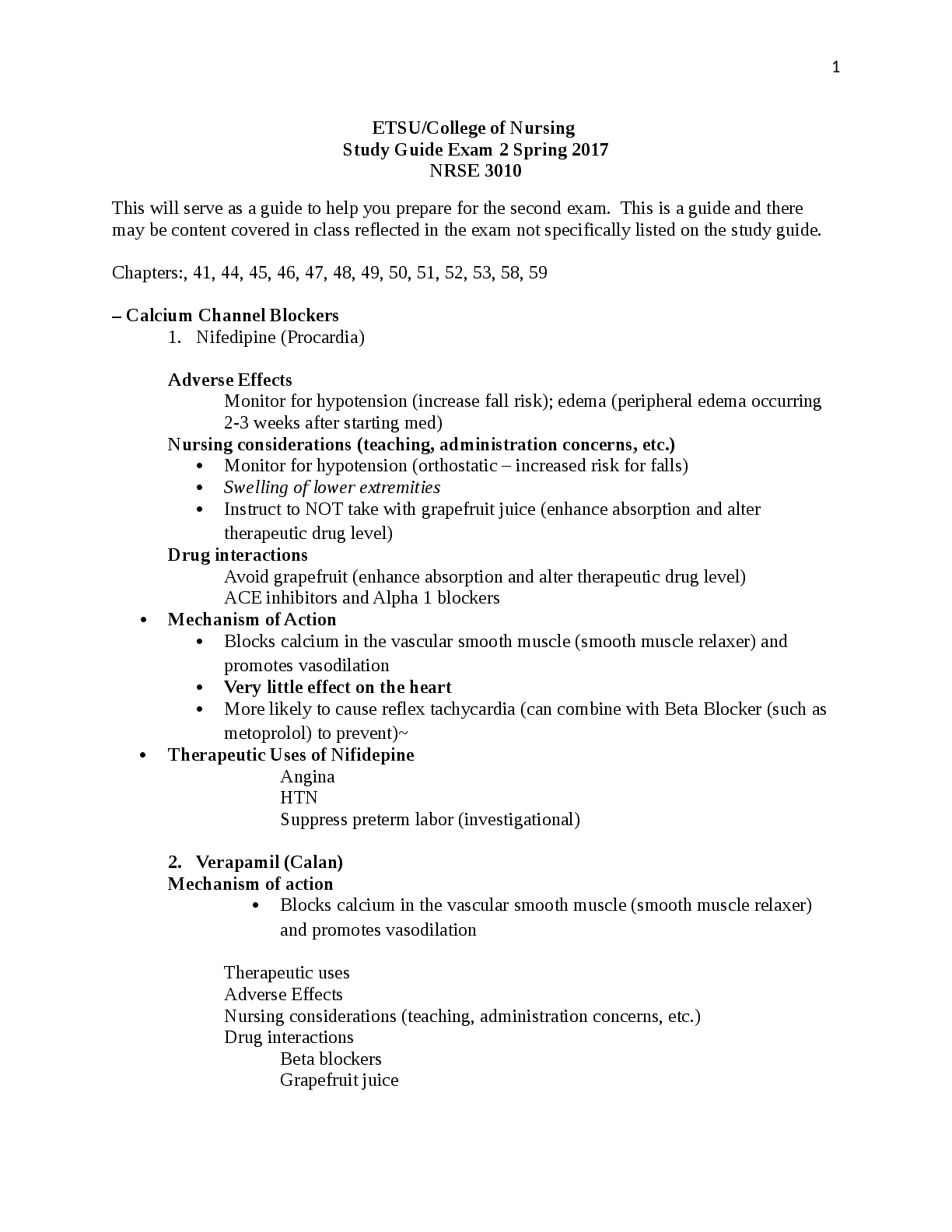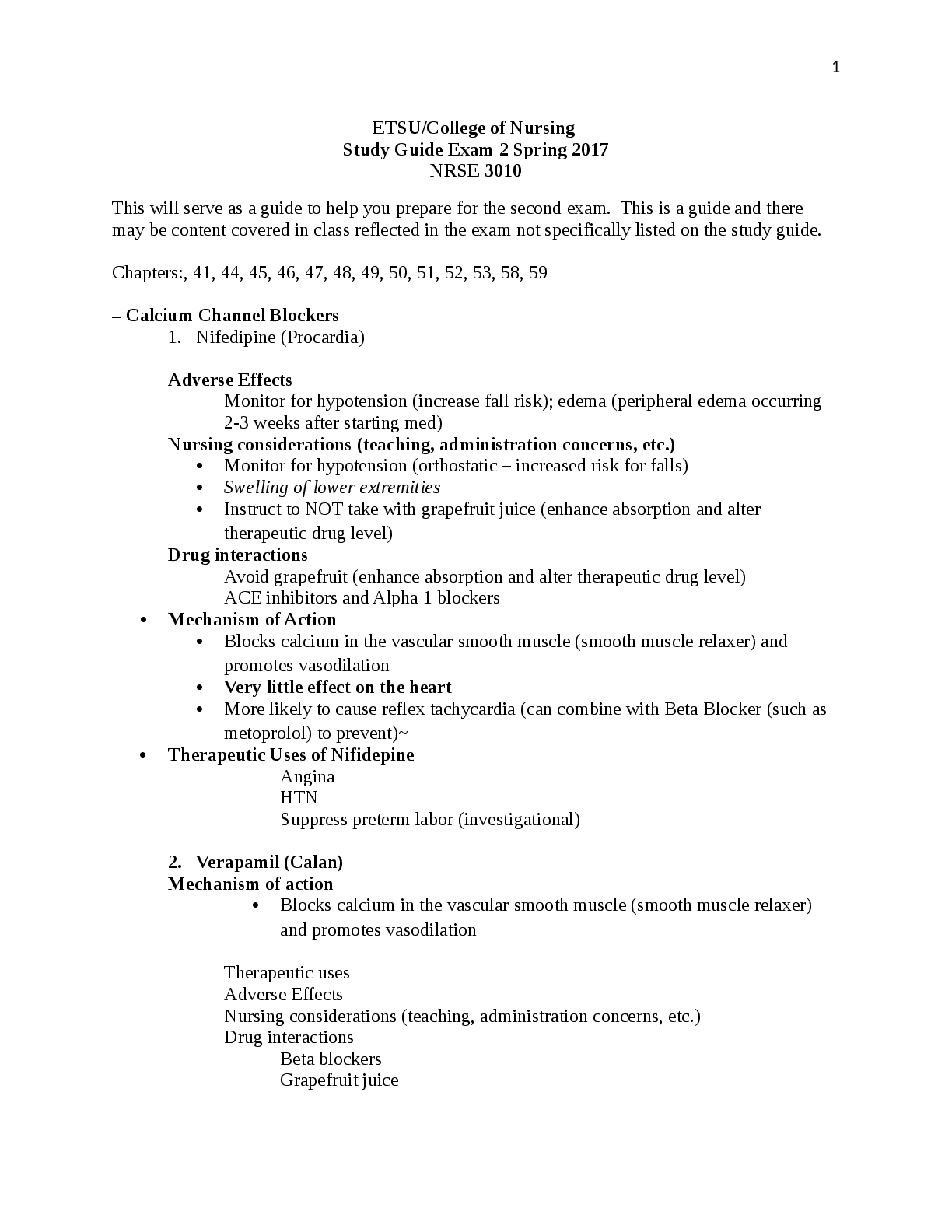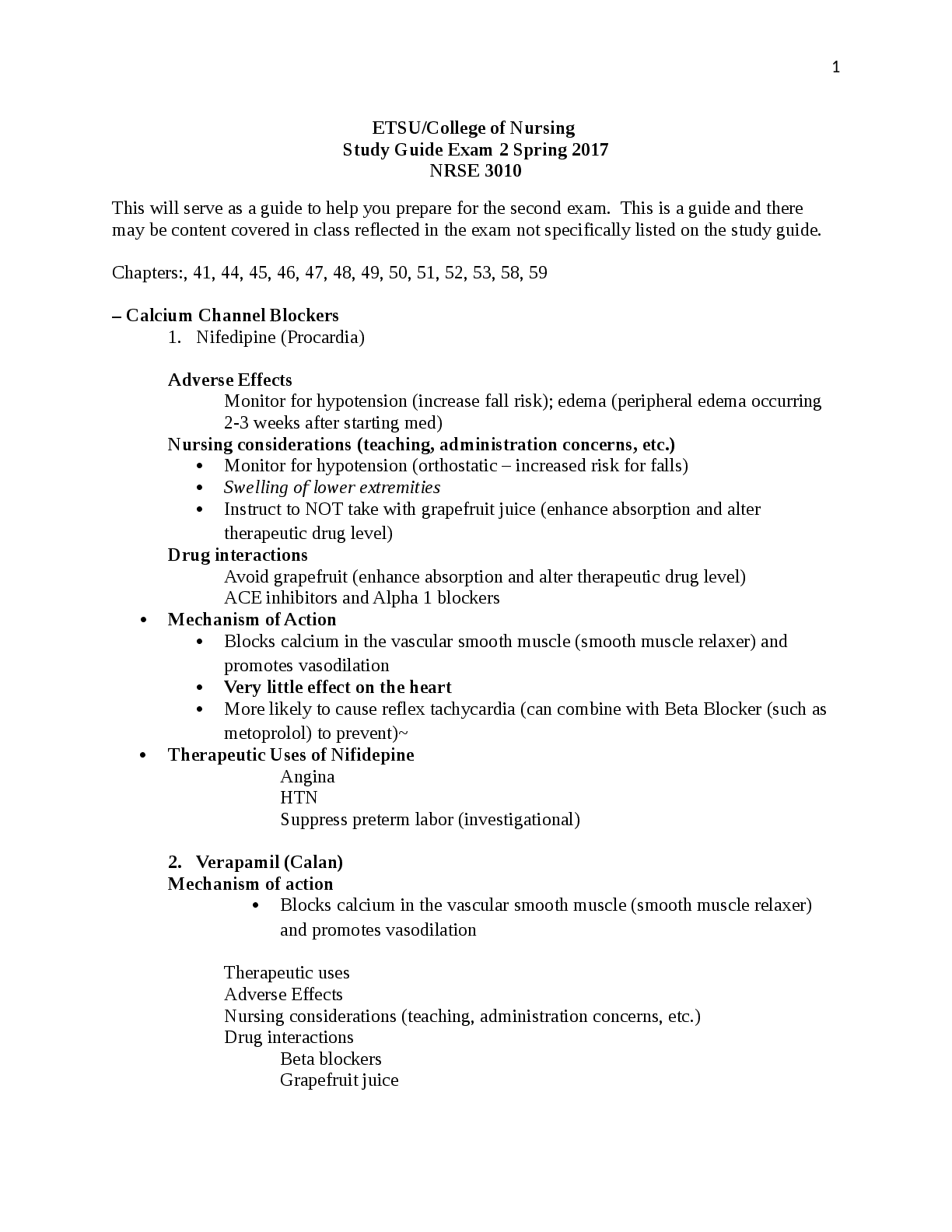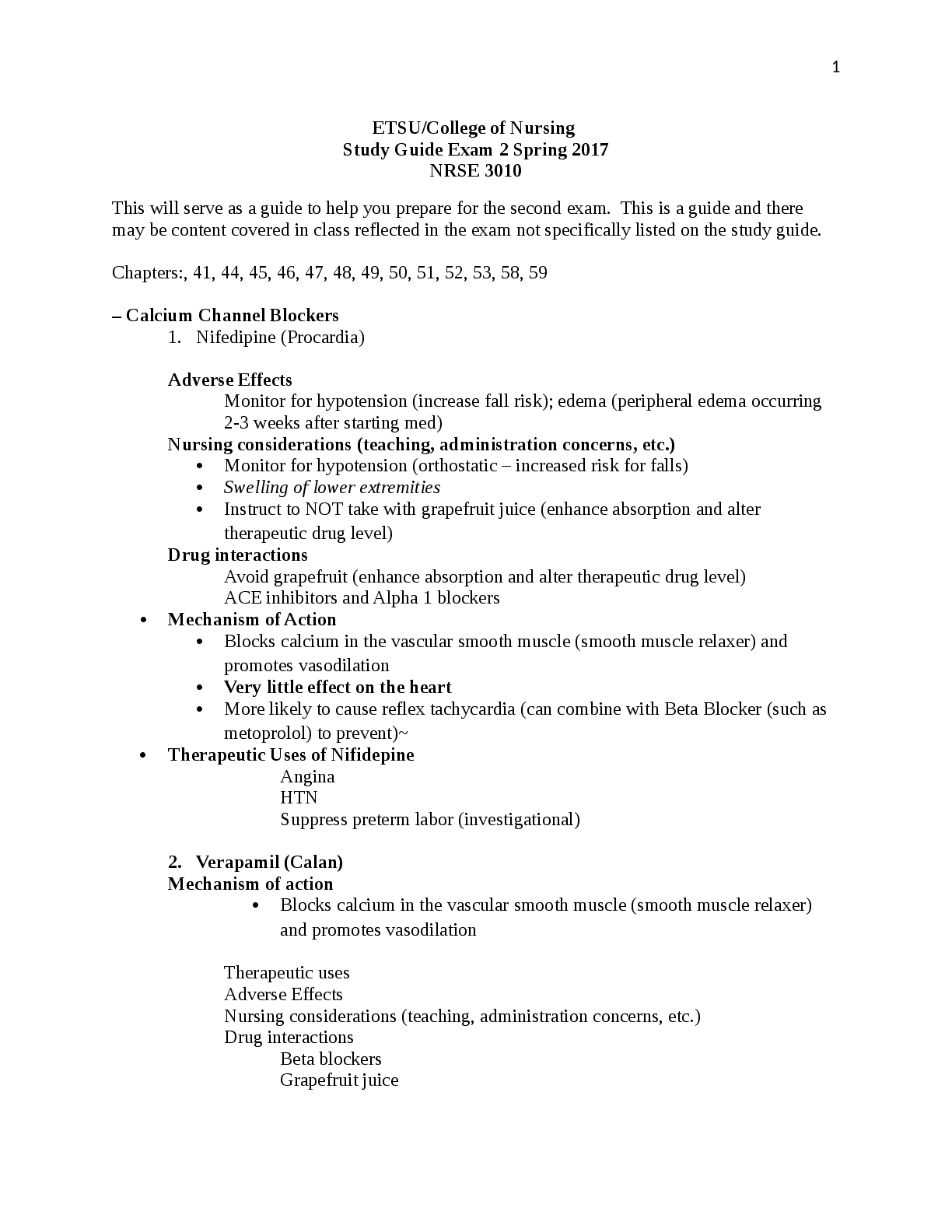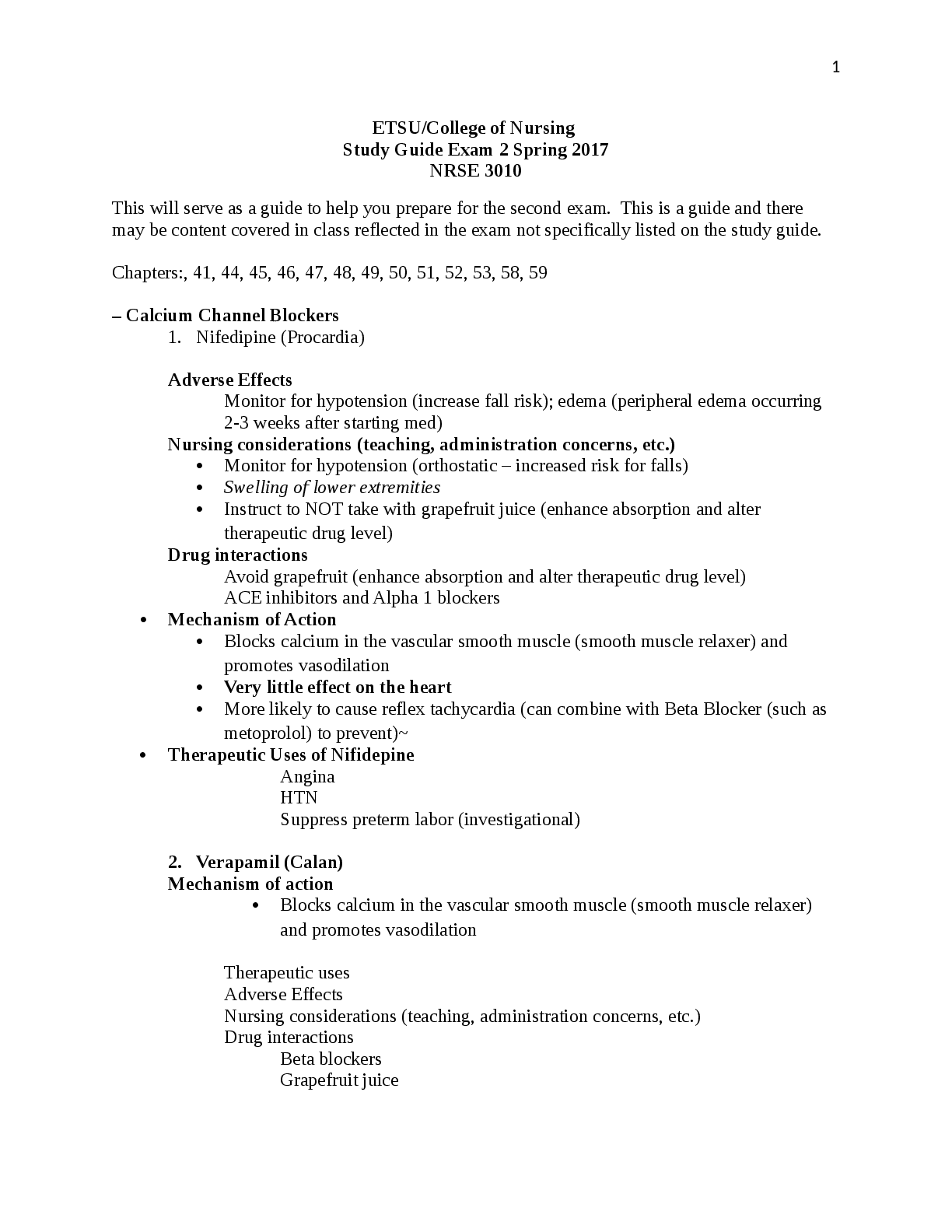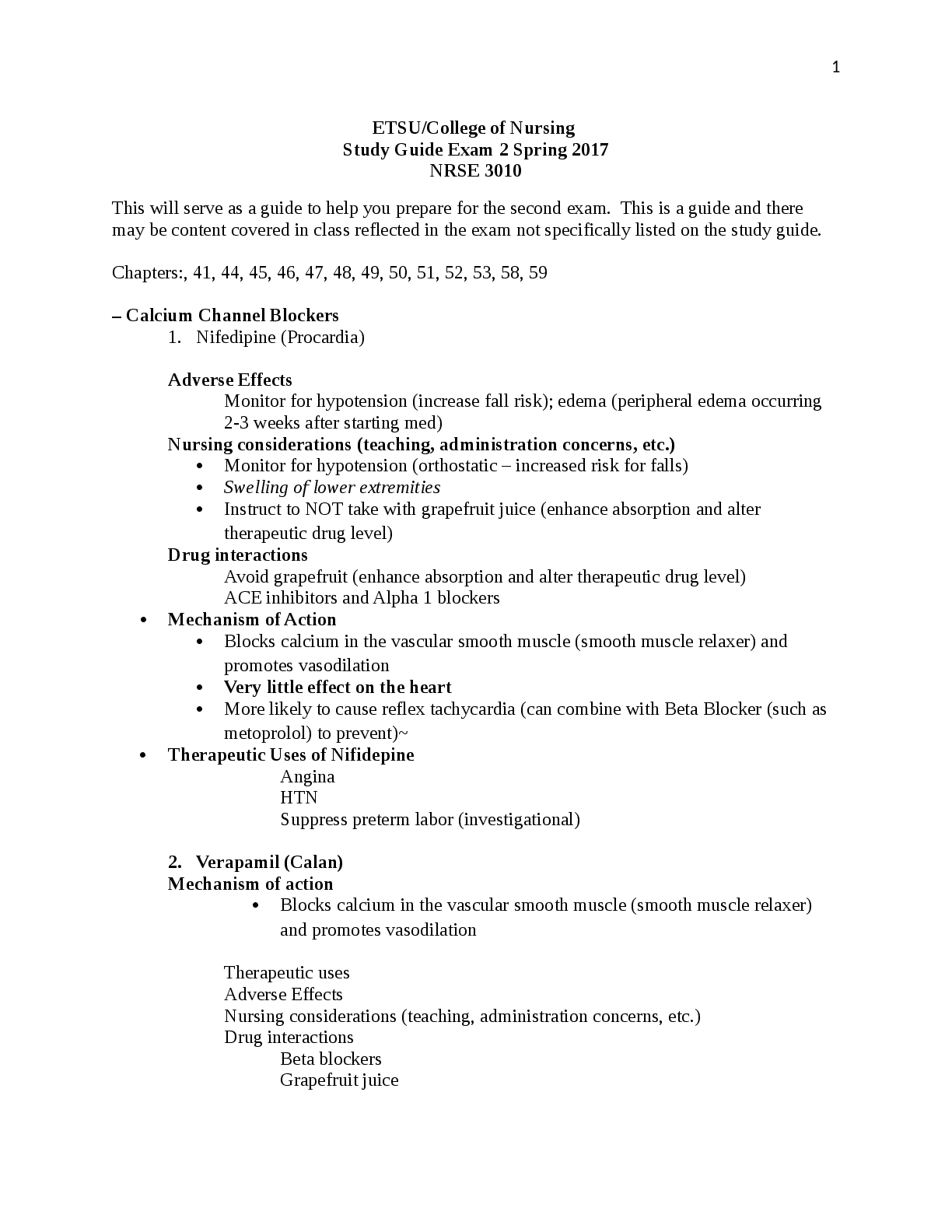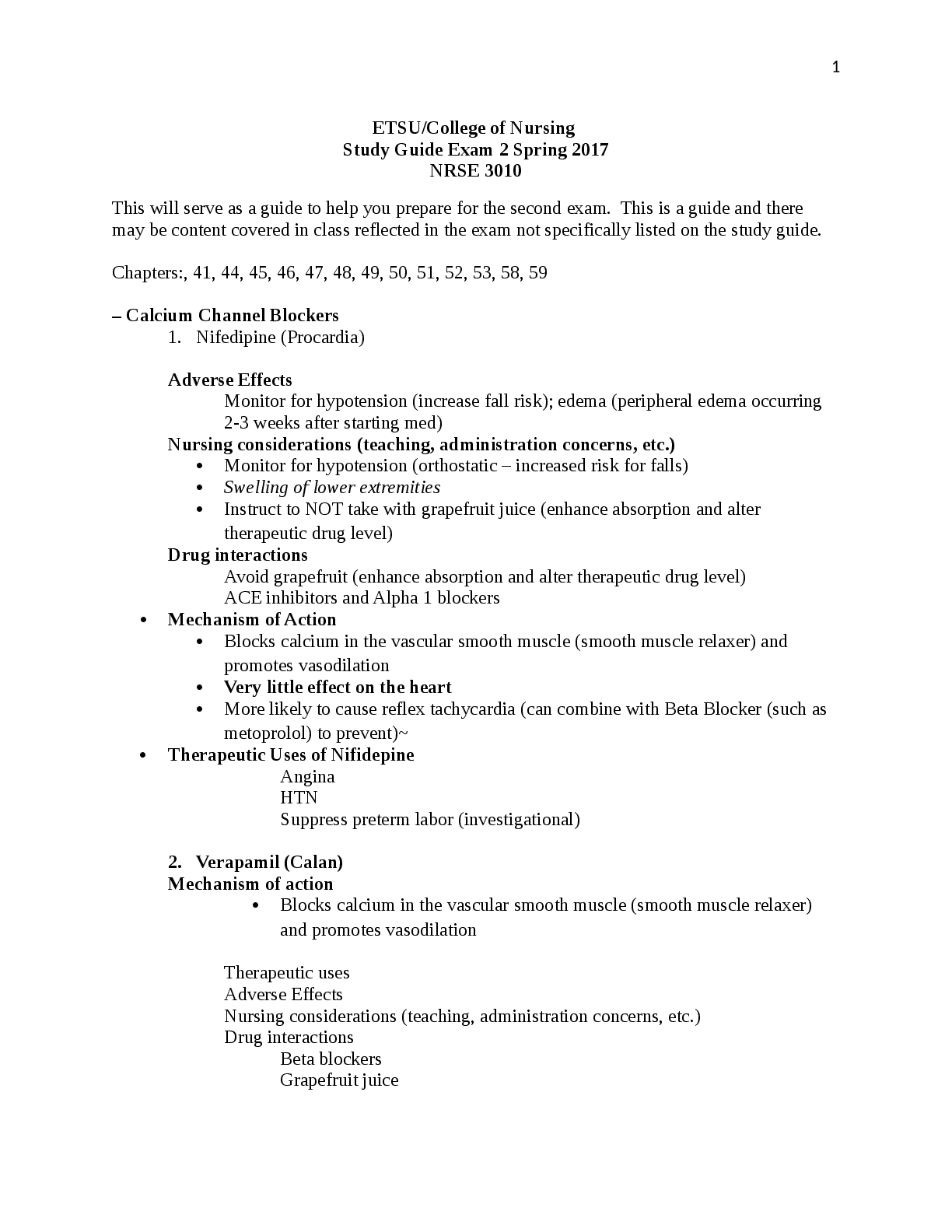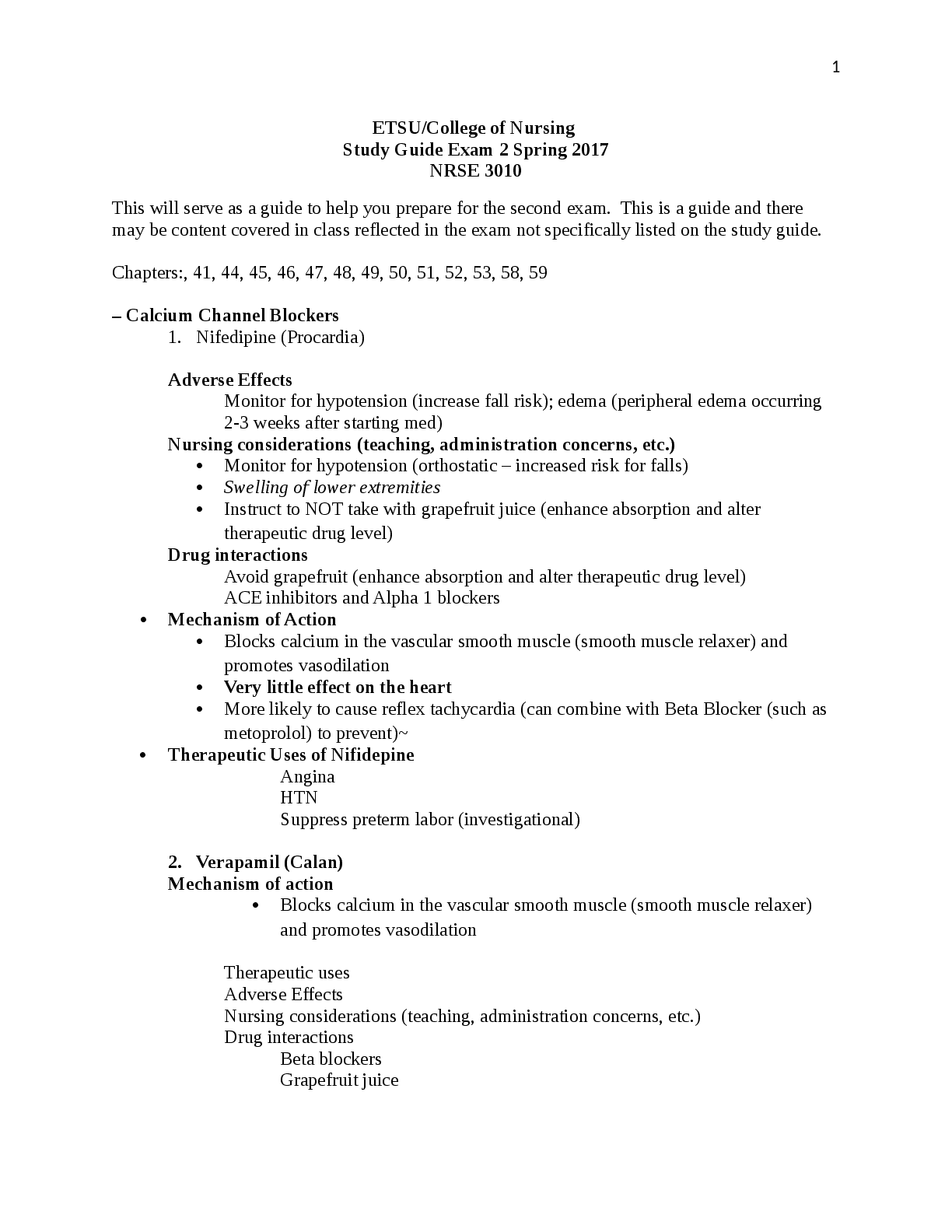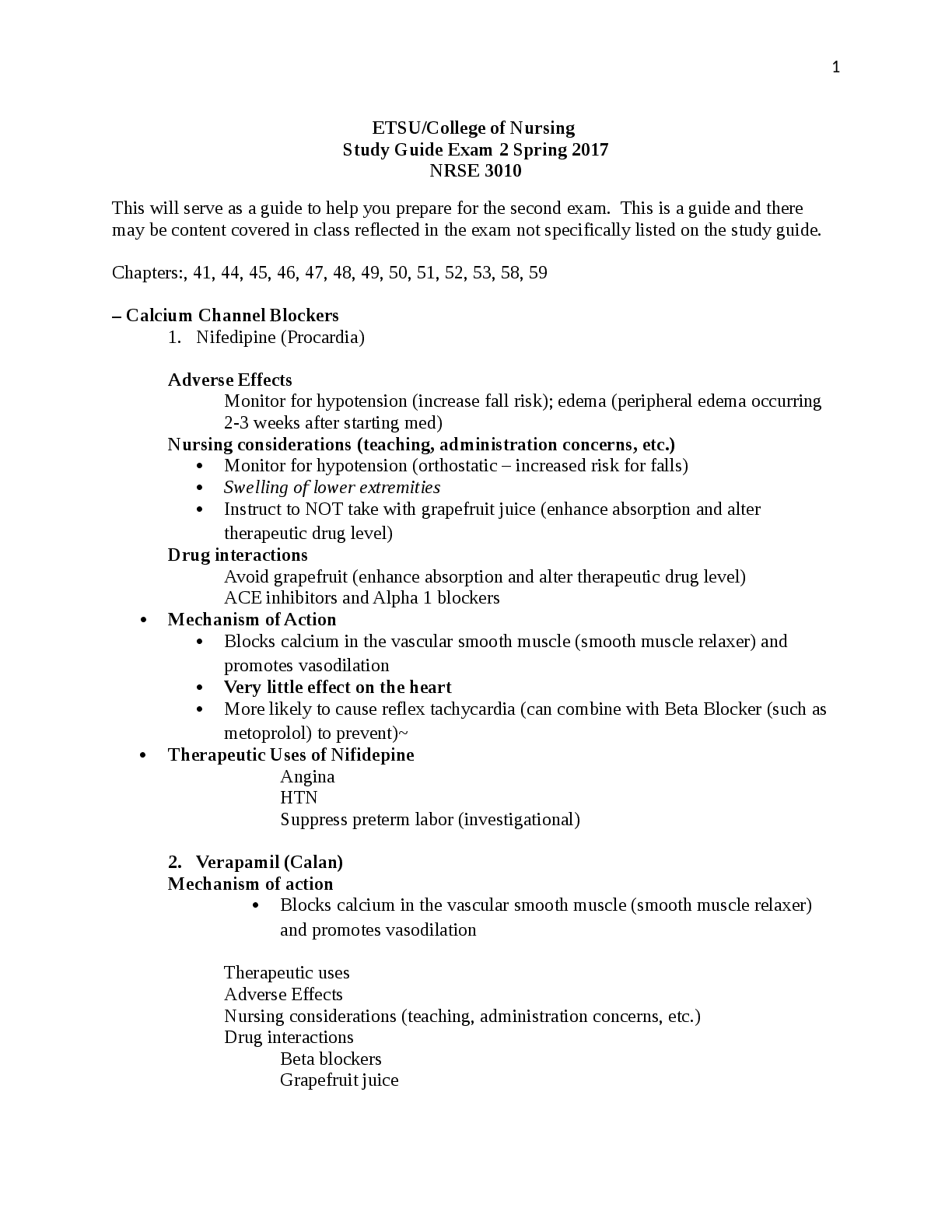*NURSING > ATI MEDICAL SURGICAL > MedSurg book study guide exam (All)
MedSurg book study guide exam
Document Content and Description Below
MedSurg book study guide exam Which tumor features are most closely associated with malignant cells rather than benign cells? Select all that apply. Dietary Habits to Reduce Cancer Risk _______... _________________________________ • Avoid excessive intake of animal fat. • Avoid nitrites (prepared lunch meats, sausage, bacon). • Minimize your intake of red meat. • Keep your alcohol consumption to no more than one or two drinks per day. • Eat more bran. • Eat more cruciferous vegetables such as broccoli, cauliflower, Brussels sprouts, and cabbage. • Eat foods high in vitamin A (e.g., apricots, carrots, leafy green and yellow vegetables) and vitamin C (e.g., fresh fruits and vegetables, especially citrus fruits). Health Promotion and Maintenance ________________________________________ Which statement by a client who has tested negative for a BRCA1 mutation (while her sister is positive) indicates to the nurse that the client has correct understanding of the results? Health Promotion and Maintenance ________________________________________ Which actions does the nurse teach a client as primary cancer prevention strategies? Select all that apply. • Be aware of these facts regarding cancer risk and cancer development: • Cancer cells originate from normal body cells. • Transformation of a normal cell into a cancer cell involves mutation of the genes (DNA) of the normal cell and results in the loss of CELLULAR REGULATION. • Oncogenes that are overexpressed can cause a cell to develop into a tumor. • Most tumors arise from cells that are capable of cell division. • A key feature of cancer cells is the loss of CELLULAR REGULATION and apoptosis. These cells have an “infinite” life span. • Tobacco use is a causative factor in 30% of all cancers. • Adults with reduced IMMUNITY have a higher risk for cancer development. • Tumors that metastasize from the primary site into another organ are still designated as tumors of the originating tissue. • Cancer cells that are less differentiated and have a higher mitotic index are “more malignant” and harder to cure. Care of the Patient With Sealed Implants of Radioactive Sources ________________________________________ • Assign the patient to a private room with a private bath. • Place a “Caution: Radioactive Material” sign on the door of the patient's room. • If portable lead shields are used, place them between the patient and the door. • Keep the door to the patient's room closed as much as possible. • Wear a dosimeter film badge at all times while caring for patients with radioactive implants. The badge offers no protection but measures a person's exposure to radiation. Each person caring for the patient should have a separate dosimeter to calculate his or her specific radiation exposure. • Wear a lead apron while providing care. Always keep the front of the apron facing the source of radiation (do not turn your back toward the patient). • If you are attempting to conceive, do not perform direct patient care, regardless of whether you are male or female. • Pregnant nurses should not care for these patients; do not allow pregnant women or children younger than 16 years to visit. • Limit each visitor to one-half hour per day. Be sure visitors stay at least 6 feet from the source. • Never touch the radioactive source with bare hands. In the rare instance that it is dislodged, use a long-handled forceps to retrieve it. Deposit the radioactive source in the lead container kept in the patient's room. • Save all dressings and bed linens in the patient's room until after the radioactive source is removed. After the source is removed, dispose of dressings and linens in the usual manner. Other equipment can be removed from the room at any time without special precautions and does not pose a hazard to other people. Safe and Effective Care Environment ________________________________________ Which statements regarding care of the client receiving radiotherapy in the form of unsealed radioactive isotopes guides the nurse's care planning? Select all that apply. Chemotherapy Drug Categories Alkylating agents cross-link DNA, making the DNA strands bind tightly together. This action prevents proper DNA and ribonucleic acid (RNA) synthesis, which inhibits cell division. Antimetabolites are similar to normal metabolites needed for vital cell processes. Most cell reactions require metabolites to begin or continue the reaction. Antimetabolites closely resemble normal metabolites and act as “counterfeit” metabolites that fool cancer cells into using the antimetabolites in cellular reactions. Because antimetabolites cannot function as proper metabolites, their presence impairs CELLULAR REGULATION, especially cell division. Antimitotic agents (also known as mitosis inhibitors) interfere with the formation and actions of microtubules so cells cannot complete mitosis during cell division. As a result the cancer cell either does not divide at all or divides only once. Antitumor antibiotics are drugs that were originally developed as antibiotics that have effects on cancer cells. These drugs damage the cell's DNA and interrupt DNA or RNA synthesis. The exact mechanism of interruption varies with each agent. Topoisomerase inhibitors disrupt an enzyme (topoisomerase) essential for DNA synthesis and cell division. When drugs disrupt the enzyme, proper DNA maintenance is prevented, resulting in increased DNA breakage and eventual cell death. Miscellaneous chemotherapy drugs are those with mechanisms of action that are either unknown or do not fit those of other drug categories. Prevention of Infection bathe daily with an antimicrobial soap. Keep your toothbrush dry. Follow the cancer center's instructions for eating fresh salads; raw fruits and vegetables; meat, fish and eggs; and pepper and paprika. Take your temperature at least once a day and whenever you do not feel well. • Report any of these indications of infection to your oncologist immediately: • Temperature greater than 100° F (37.8° C) • Persistent cough (with or without sputum) • Pus or foul-smelling drainage from any open skin area or normal body opening • Presence of a boil or abscess • Urine that is cloudy or foul smelling or that causes burning on urination Health Promotion and Maintenance ________________________________________ The client who received combination chemotherapy 7 days ago for breast cancer calls the oncology clinic to report a temperature of 100.5° F (38.6° C) and has no other symptoms of infection. What is the nurse's bestresponse? Oncologic Emergencies sepsis and disseminated intravascular coagulation, syndrome of inappropriate antidiuretic hormone, spinal cord compression, hypercalcemia, superior vena cava syndrome, and tumor lysis syndrome Sepsis and Disseminated Intravascular Coagulation Sepsis, or septicemia, is a condition in which organisms enter the bloodstream (bloodstream infection [BSI]) and can result in septic shock, a life-threatening condition. Adults with cancer ……………………………….continued……………………………. ________________________________________ [Show More]
Last updated: 2 years ago
Preview 1 out of 12 pages
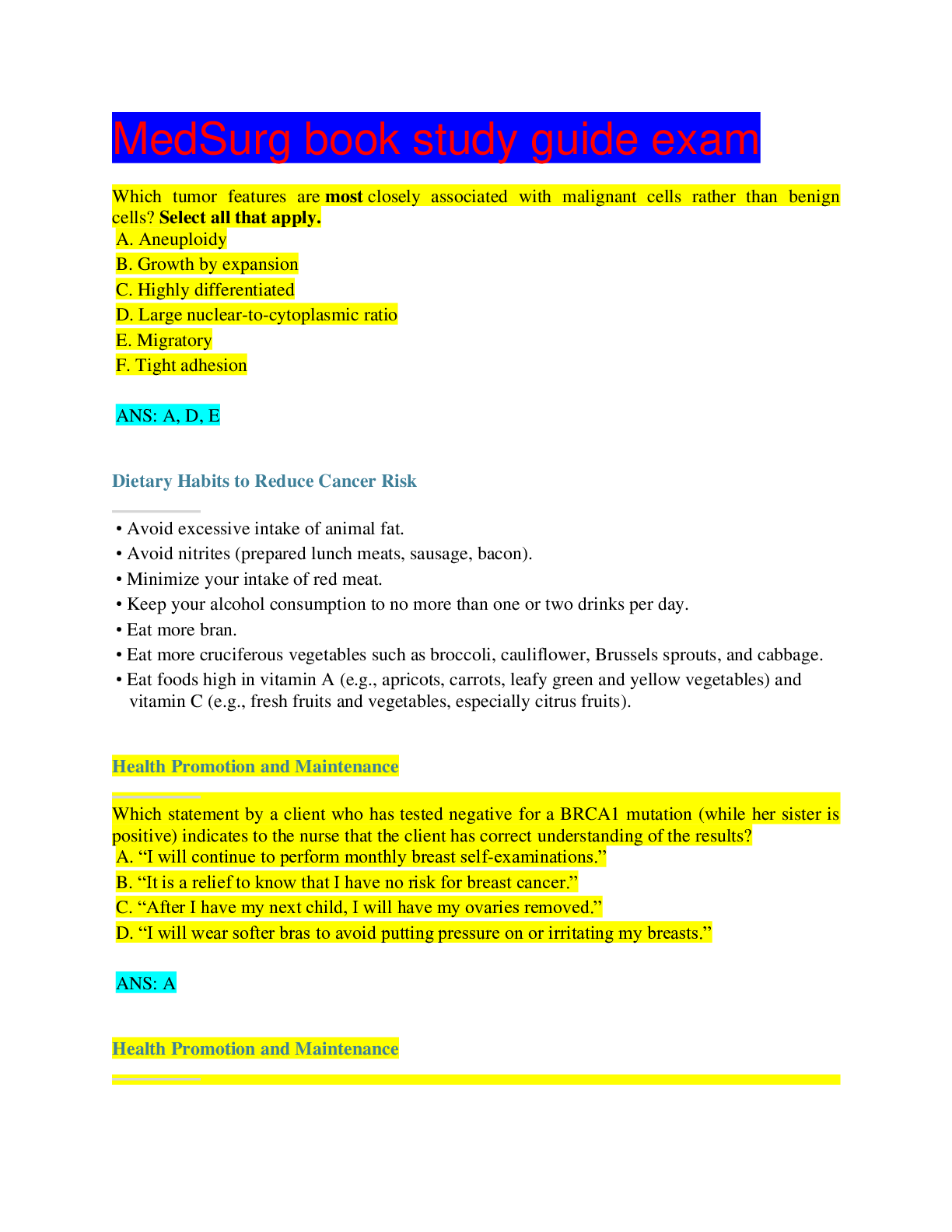
Buy this document to get the full access instantly
Instant Download Access after purchase
Buy NowInstant download
We Accept:

Reviews( 0 )
$14.00
Can't find what you want? Try our AI powered Search
Document information
Connected school, study & course
About the document
Uploaded On
Jan 14, 2021
Number of pages
12
Written in
Additional information
This document has been written for:
Uploaded
Jan 14, 2021
Downloads
0
Views
99


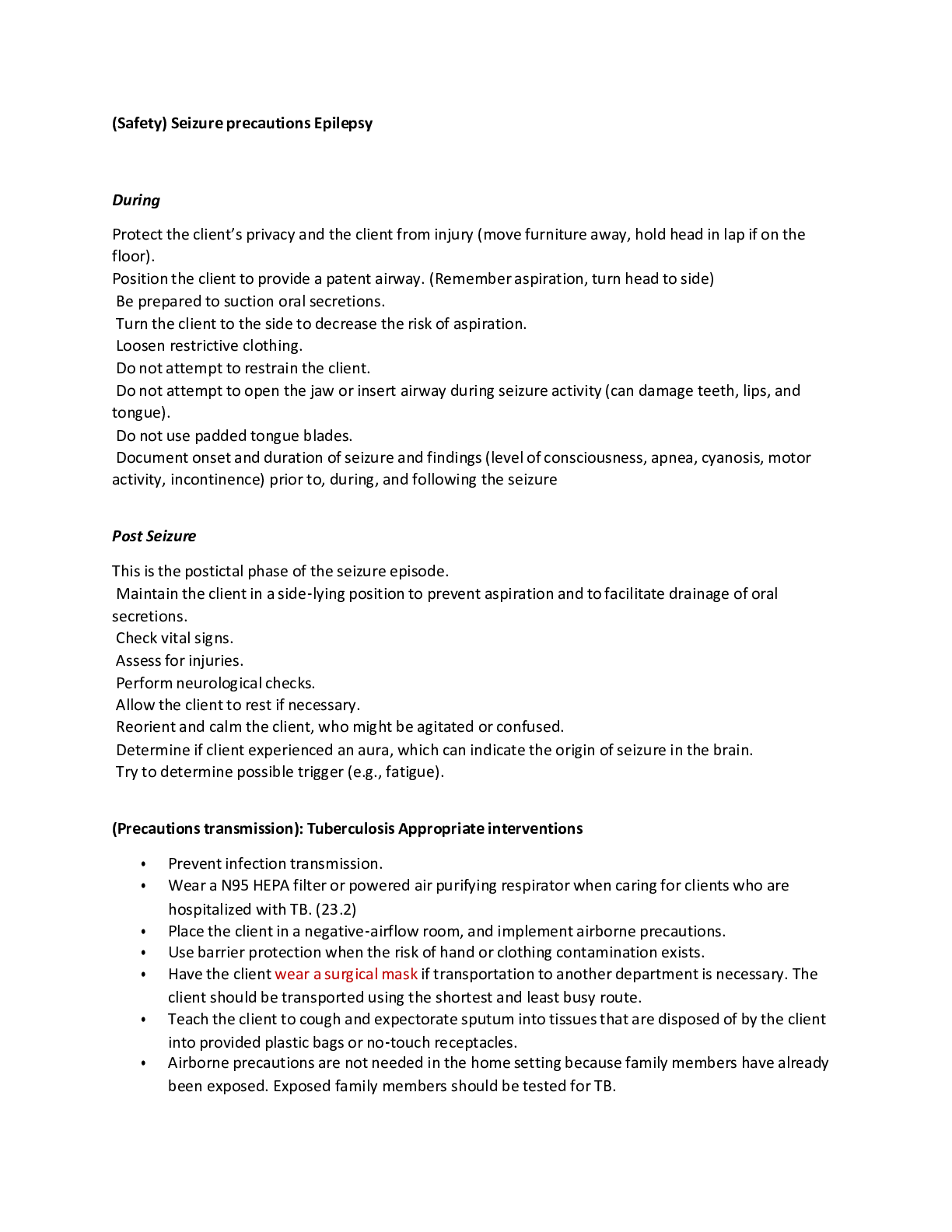



 (1).png)

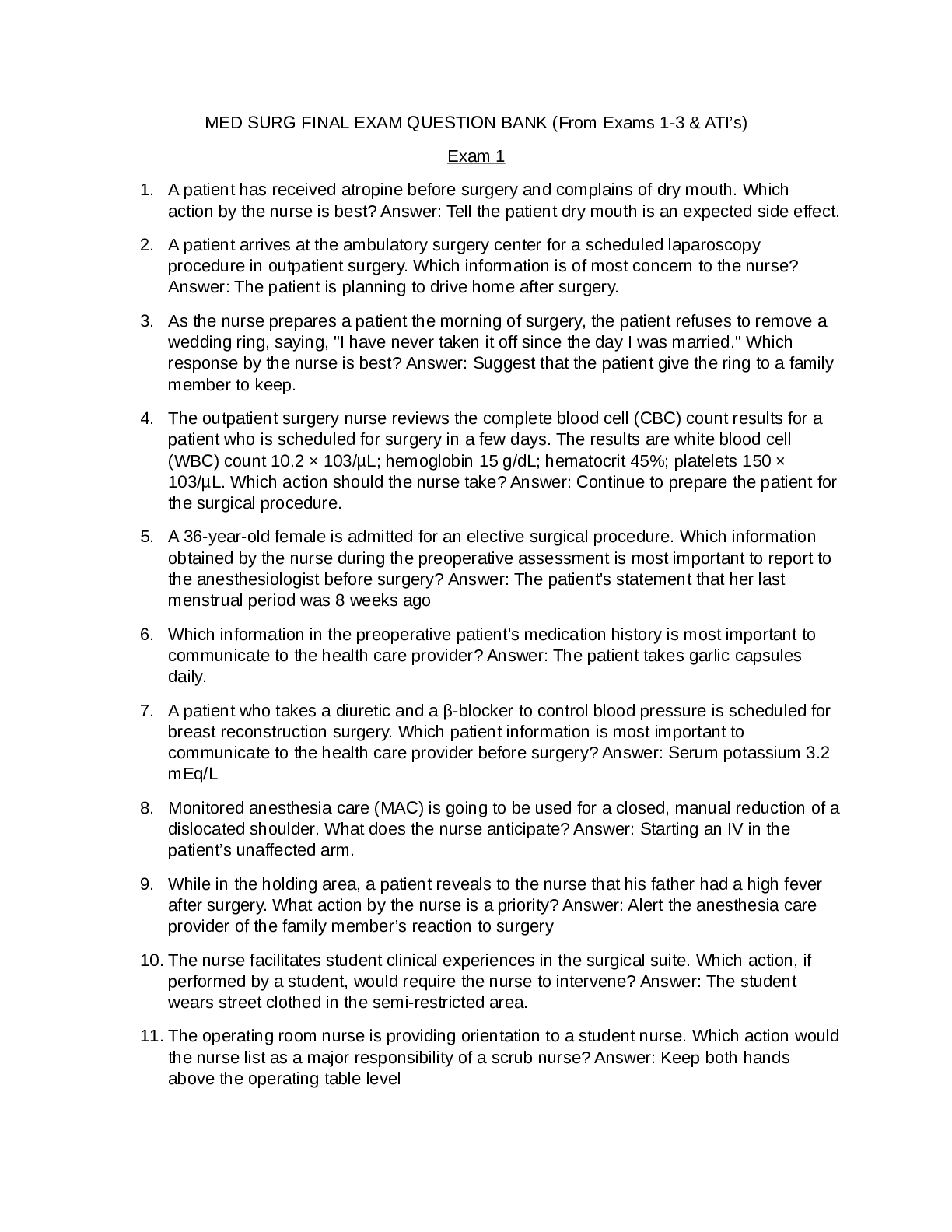
.png)


